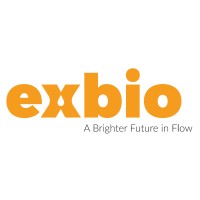CD86 Monoclonal / PE-Cy7 / BU63
Product Details
| Description | CD80 (B7-1) and CD86 (B7-2) are ligands of T cell critical costimulatory molecule CD28 and of an inhibitory receptor CTLA-4 (CD152). The both B7 molecules are expressed on professional antigen-presenting cells and are essential for T cell activation, the both molecules can also substitute for each other in this process. The question what are the differences in CD80 and CD86 competency has not been fully elucidated yet; there are still conflicts in results about their respective roles in initiation or sustaining of the T cell immune response. | |
|---|---|---|
| Conjugate | PE-Cy7 | |
| Clone | BU63 | |
| Target Species | Human | |
| Applications | FC, WB, IP, IHC-Fr | |
| Supplier | EXBIO | |
| Catalog # | Sign in to view product details, citations, and spectra | |
| Size | ||
| Price | ||
| Antigen | ||
| Host | ||
| Isotype |
About CD86
This gene encodes a type I membrane protein that is a member of the immunoglobulin superfamily. This protein is expressed by antigen-presenting cells, and it is the ligand for two proteins at the cell surface of T cells, CD28 antigen and cytotoxic T-lymphocyte-associated protein 4. Binding of this protein with CD28 antigen is a costimulatory signal for activation of the T-cell. Binding of this protein with cytotoxic T-lymphocyte-associated protein 4 negatively regulates T-cell activation and diminishes the immune response. Alternative splicing results in several transcript variants encoding different isoforms.[provided by RefSeq, May 2011]
This gene encodes a type I membrane protein that is a member of the immunoglobulin superfamily. This protein is expressed by antigen-presenting cells, and it is the ligand for two proteins at the cell surface of T cells, CD28 antigen and cytotoxic T-lymphocyte-associated protein 4. Binding of this protein with CD28 antigen is a costimulatory signal for activation of the T-cell. Binding of this protein with cytotoxic T-lymphocyte-associated protein 4 negatively regulates T-cell activation and diminishes the immune response. Alternative splicing results in several transcript variants encoding different isoforms.[provided by RefSeq, May 2011]
About PE-Cy7
PE-Cyanine®7 (PE-Cy7, RPE-Cy7) is a far red-emitting tandem fluorophore that combines phycoerythrin (PE) and Cy7. The donor molecule, PE can be excited by the 488-nm blue, 532-nm green, or 561-nm yellow-green laser and and transfers energy to the acceptor molecule, Cy7, which emitts light that can be captured with a 780/60 nm bandpass filter. PE-CY7 has an excitation peak at 565 nm and an emission peak at 778 nm, and is a suitable alternative to PE-Vio®770 and PE-Fire™ 780.
PE-Cyanine®7 (PE-Cy7, RPE-Cy7) is a far red-emitting tandem fluorophore that combines phycoerythrin (PE) and Cy7. The donor molecule, PE can be excited by the 488-nm blue, 532-nm green, or 561-nm yellow-green laser and and transfers energy to the acceptor molecule, Cy7, which emitts light that can be captured with a 780/60 nm bandpass filter. PE-CY7 has an excitation peak at 565 nm and an emission peak at 778 nm, and is a suitable alternative to PE-Vio®770 and PE-Fire™ 780.
Experiment Design Tools
Panel Builders
Looking to design a Microscopy or Flow Cytometry experiment?
Validation References
Reviews & Ratings
| Reviews |
|---|
Looking for more options?
2194 CD86 antibodies from over 51 suppliers available with over 124 conjugates.





